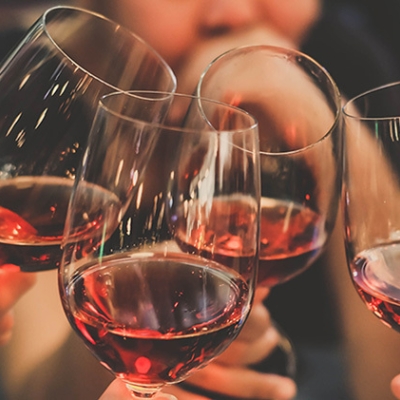Monday, 11 February 2019 / Topics:

Australians and drinking
We come from a sun burnt country, and we enjoy a cold beverage to combat this!
Australia is unique from the rest of the world, in that, compared to countries in the northern hemisphere, our holiday festive season corresponds to our amazing summer weather, and when you consider that Australians receive four weeks annual leave every year (more than most western countries), this provides a lot of opportunities to enjoy a drink over the summer break.
According to the National Alcohol and Drug Knowledgebase, which examined data from the Australian Bureau of Statistics, in 2013-14 there was approximately 9.7L of pure alcohol per person available for consumption for Australians 15 years and over. This equates to 970 standard alcoholic beverages per person available for consumption (10g per alcoholic beverage). It must be noted that this figure will be overestimated due to the fact that the figures do not account for wastage or alcohol used in cooking. During 2009-2010 Australians spent on average $32.35 on alcohol per week with most of this expenditure on beer.
What type of alcohol are we buying?
According to the Australian Institute of Health and Welfare (AIHW) 2013 National Drug Strategy Household Survey, the most commonly consumed alcoholic beverage in Australia is bottled wine at 34%, followed by regular strength beer at 20% and bottled spirits and liqueur at 15%.
A standard alcoholic beverage contains 10g of alcohol and is approximately equal to 100ml of wine, 375ml of mid strength beer and 30ml of spirits. One gram of alcohol contains 29kj (7 calories) of energy equating every standard drink to a minimum of 290kj before any other macronutrients are taken into consideration such as added sugar in the form of a mixer or fat that could be added to alcoholic beverages in the form of cream in cocktails.
How much energy are you consuming when you drink alcohol?
Well, as stated above a standard glass of wine is equal to 100ml, this means you should be able to pour 7.5 glasses of wine from every standard bottle. I’m not confident in the average Australian’s ability to gauge 100ml of wine, especially after consuming 200ml of wine, so I think it’s reasonable to assume that the average Australian glass of wine is 150ml which equates to five glasses per bottle.
- 150ml of wine equates to approximately 490kj.
- 30ml of spirits equates to 290kj but add 200ml of soft drink and now we are looking at 650kj per drink
- A schooner (450ml) of regular beer is equal to 680kj.
So, as you can see, alcoholic beverages certainly add up! And if you enjoy the odd cocktail, consider how many different types of spirits are often added to one cocktail plus the soft drink and juice mixers and then cream and egg in some cocktails, all of the sudden one drink has more energy than lunch, for example one Midori Splice contains over 1500kj!
Australian alcohol guidelines recommend that Australians:
- Consume no more than two standard alcoholic beverages on one day to reduce the risk of alcohol related harm over a lifetime
- Consume no more than four standard alcoholic beverages on one occasion to reduce the risk of alcohol related injury during that occasion
- For women who are pregnant, planning to get pregnant, or who are breast feeding, not drinking is the safest option.
If you consider these guidelines, which you absolutely should, and that the total recommended daily energy intake for most healthy male and female adults is approximately 8000kj per day, two standard drinks is almost equal to 10% of your daily energy intake, and as we know, most people consume more than two standard drinks in a sitting.
Then if you consider the flow on effects of alcohol such as increased appetite, reduced inhibitions resulting in increased intake of energy dense low nutrient foods and if you consume more than the recommended amounts and wake up the next day feeling a little worse for wear, exercise is out and takeaway is in, so the effect of drinking often spans longer than the actual occasion.
Tips to avoid consuming excess alcohol
- Ensure you have at least two alcohol free days a week, preferably three or four!
- Plan ahead, look at your social calendar and allocate events where you will enjoy a drink and others where you will be designated driver.
- Hold the mixers or choose diet soft drinks or soda water and skip the cocktails, these add a significant amount of kilojoules to your diet.
- Choose quality over quantity. Drink for pleasure and enjoy your beverage, don’t drink to get drunk.
- Don’t forget H2O! Match every alcoholic beverage with 250ml of water.
- Prepare healthy snacks when you are making sensible decisions before you start drinking
- Don’t drink on an empty stomach
- Most importantly, know your limits, and do not drink and drive.

